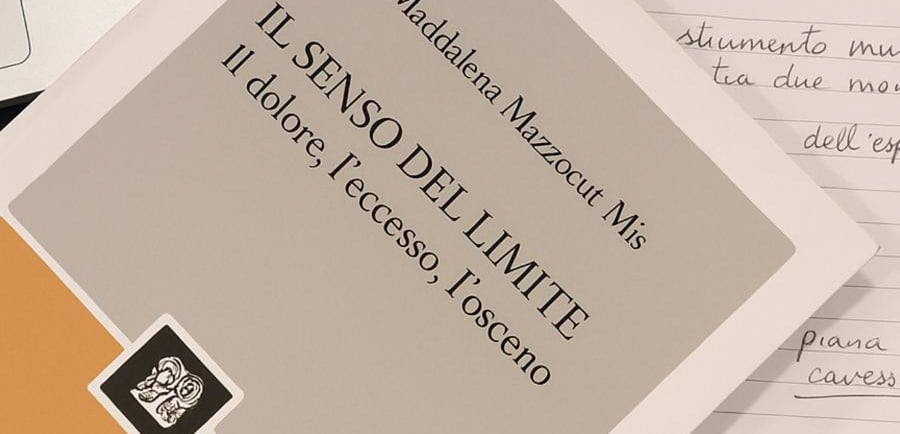Where the Gaze Trembles: On the Aesthetics of the Limit
This book explores the edge where art challenges perception, transforming excess, pain, and the obscene into instruments of thought. Maddalena Mazzocut-Mis invites us to confront discomfort, question boundaries, and experience aesthetics as both critical and ethical practice.
BOOK ON MY TABLE
Charlotte Madeleine CASTELLI
10/10/20252 min read


When art ceases to comfort and begins to fracture... when the gaze trembles, uncertain whether to look or to turn away. Maddalena Mazzocut-Mis’ Il senso del limite unfolds precisely within that trembling space: the edge where aesthetic experience becomes an act of risk, reflection, and critical resistance.
This book is not concerned with spectacle or mere provocation; rather, it examines the way art pushes the boundaries of perception and understanding, using excess, pain, and obscenity as conceptual instruments to provoke thought, invite reflection, and sustain ethical engagement. In Mazzocut-Mis’ vision, the limit is never simply a boundary but a methodology: a space in which art negotiates its capacity to mean, to make visible what is often hidden, silenced, or culturally repressed. Every encounter with the obscene, every depiction of suffering, every deliberate act of excess is not gratuitous but a carefully calibrated exploration of the threshold where beauty, horror, and insight converge. The obscene is treated as revelation, a mechanism to uncover structures of power, shame, or vulnerability that society prefers to ignore; it challenges spectators to confront discomfort without collapsing into moral panic or voyeurism. Excess functions as a method, a deliberate compositional intensity that ruptures habituated perception and compels the viewer to heightened awareness of form and meaning. Here, Mazzocut-Mis distinguishes between excess that anesthetizes and excess that illuminates, demonstrating that true artistic intensity is measured not by the volume of stimuli but by its capacity to concentrate reflection and ethical resonance. Pain, similarly, is framed as both aesthetic material and ethical question: representing suffering is not an invitation to consumption but an opportunity for the audience to become witnesses, to move from passive spectatorship to reflective engagement.
The book highlights three operative effects of limit-driven art: involvement, disturbance, and inquiry. Involvement cultivates empathy without sentimentality; disturbance fractures the comfort of the gaze and exposes the fragility of perception; inquiry opens a dialogue between representation and reality, allowing the work to function as a catalyst for thought rather than a mere spectacle. For curators, this book becomes an indispensable guide: exhibiting work that tests the boundaries of the visible is a practice that requires careful orchestration of context, mediation, and interpretive framing, ensuring that the audience encounters intensity in a way that is critically engaged rather than sensationalized. Art at the limit demands editorial responsibility; it asks us to measure the impact of what is seen and to provide mechanisms through which complex, painful, or destabilizing experiences can be integrated into reflection and understanding.
Ultimately, Mazzocut-Mis offers a vision in which aesthetics is inseparable from responsibility: the limit is not a prohibition but a laboratory for thought, a terrain where the artist, curator, and spectator participate in an ethical and conceptual dialogue that transforms perception itself. Il senso del limite situates itself at the edge of visibility, where beauty fractures, meaning trembles, and the true power of the aesthetic act emerges—not to reassure, but to awaken, to challenge, and to sustain the consciousness of those willing to confront the extremes of human experience.
© Charlotte Madeleine Castelli | All rights reserved
